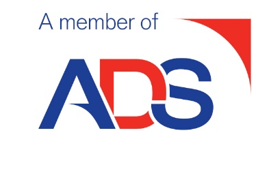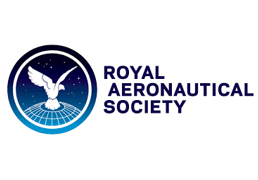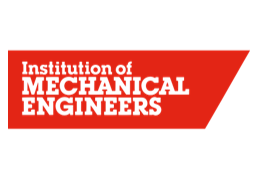My Education
I seem to have been very fortunate always to have been at the right place at the right time as far as my formal education was concerned.
I was an undergraduate student at the University of the Witwatersrand when masterful educators such as Dimitriou, Martinson, Moss, and Hamilton were at their prime, Skews and Nurick were advancing the boundaries of aeronautical science in the laboratories downstairs, and Lowenberg was fresh out of industry brimming with ideas for applying modern dynamical systems theory to understanding the non-linear flight dynamics of fixed-wing aircraft.
I was a Masters student at Cranfield when Roe and Toro were developing the underpinnings of modern Computational Fluid Dynamics, and Clarke and Stollery were at the forefront of understanding the complex chemistry and physics of real gases as they interacted with vehicles that were flying at hypersonic speeds.
I returned again to Wits as a PhD student when Ibragimov and co-workers were at the forefront of applying Group Theory to various problems in mathematical physics, and Lindesay and Tyson were starting to realise the insights that a deep mathematical approach could bring to environmental fluid mechanics.
These individuals all left me with a deep appreciation of the relevance and power of a fundamental understanding of the relevant theory when applying aerodynamic principles to practical problems, an eye for rigour and consistency when analysing engineering problems, and a lifelong passion for teaching and education.
The page below provides a little more detail regarding my education.
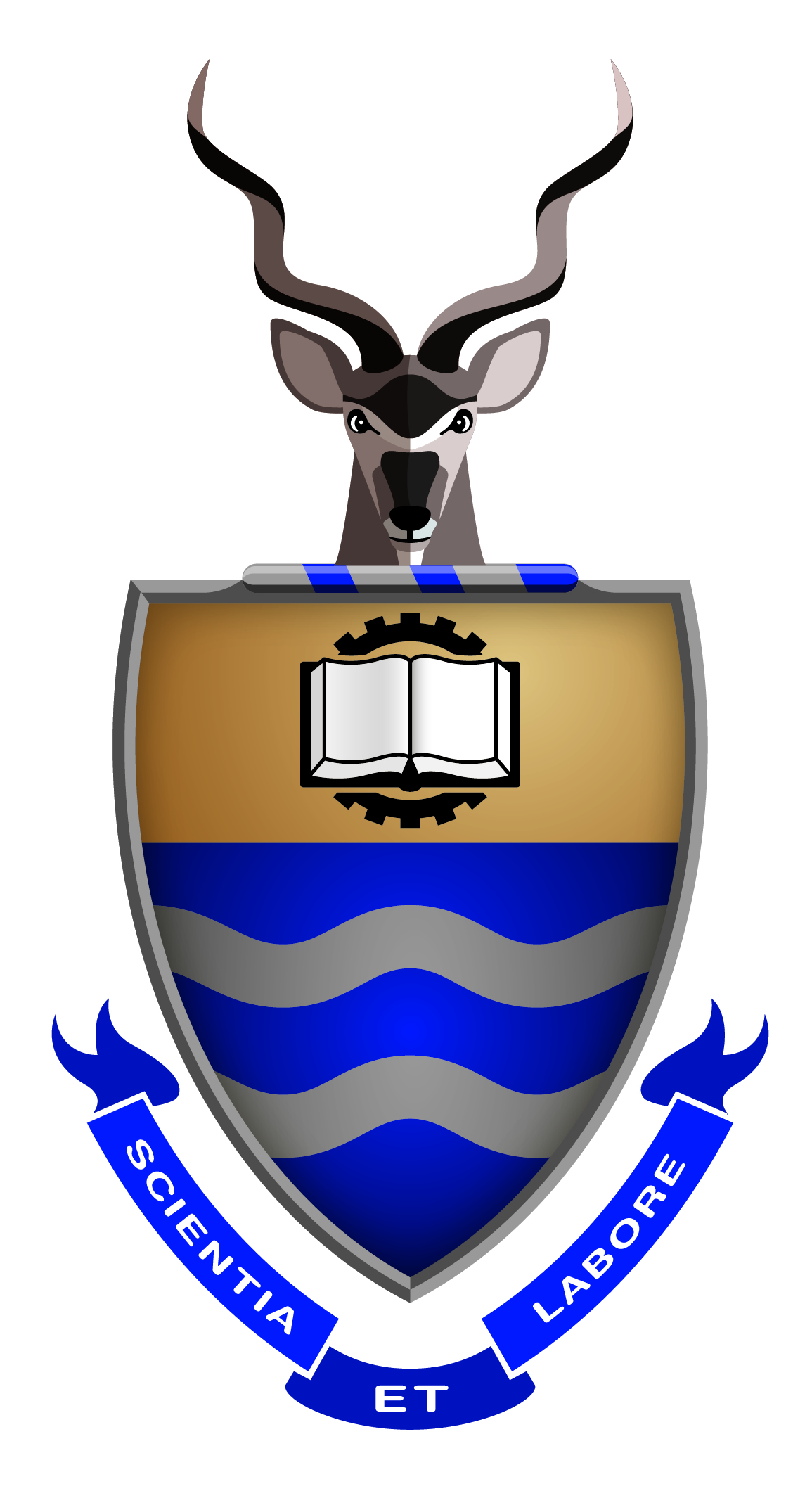
Bachelor of Science (BSc(ENG)) in Aeronautical Engineering
University of the Witwatersrand, Johannesburg
1985-1988
Like so many children of the 1960s, my initial passion for aeronautics had been born while watching the later Apollo
missions to the moon on television in the early 1970s. By the time it came to going to University, my interests had crystallised,
through an adolescence spent building both static and flying model aircraft and immersing myself in every book available,
on becoming a designer of fast jet aircraft. The University of Witwatersrand in Johannesburg had an enviable
reputation for the quality of its aeronautical education and was the ideal place to turn this interest into technical proficiency.
The Wits BSc(ENG) in Aeronautical Engineering is a four-year course that starts by teaching the basic mechanical engineering disciplines and increases in specialisation towards a fully fledged aeronautical engineering education in the latter years. In the years that have followed my attendance at Wits, I have often been thankful for the breadth of my initial education, and for its rigorous foundation on the fundamental principles of engineering science rather than on more 'applied,' but inherently career-limiting, subject matter. The staff were top quality. Rallis was developing the thermodynamic theory of Stirling engines, and Lowenberg was fresh out of industry with ideas for applying modern dynamical systems theory to understanding the flight dynamics of modern high-performance aircraft. Skews was South Africa's expert on supersonic gas dynamics and shock waves, Nurick was developing some ground-breaking ideas in the field of helicopter design, and Dimitriou, Martinson, Moss and Hamilton were masterful educators.
With the Wits BSc(ENG) degree it is traditional to conduct two projects in the final year, both being written up as dissertations. My research project was supervised by Prof Beric Skews, and my design project was supervised by Prof Alan Nurick.
The Wits BSc(ENG) in Aeronautical Engineering is a four-year course that starts by teaching the basic mechanical engineering disciplines and increases in specialisation towards a fully fledged aeronautical engineering education in the latter years. In the years that have followed my attendance at Wits, I have often been thankful for the breadth of my initial education, and for its rigorous foundation on the fundamental principles of engineering science rather than on more 'applied,' but inherently career-limiting, subject matter. The staff were top quality. Rallis was developing the thermodynamic theory of Stirling engines, and Lowenberg was fresh out of industry with ideas for applying modern dynamical systems theory to understanding the flight dynamics of modern high-performance aircraft. Skews was South Africa's expert on supersonic gas dynamics and shock waves, Nurick was developing some ground-breaking ideas in the field of helicopter design, and Dimitriou, Martinson, Moss and Hamilton were masterful educators.
With the Wits BSc(ENG) degree it is traditional to conduct two projects in the final year, both being written up as dissertations. My research project was supervised by Prof Beric Skews, and my design project was supervised by Prof Alan Nurick.
Research Dissertation : Experimental Study of the Shock Wave Geometry and Surface Flow on a Finite
Aspect Ratio Supersonic Wedge Aerofoil
As part of my research project, I obtained wind tunnel measurements of the three-dimensional geometry of the shock wave
that is formed in the flow upstream of a supersonic wing. The wings of interest had very low aspect ratio
and particularly simple, wedge-shaped aerofoil sections, which made the geometry of the shock particularly interesting
from a theoretical point of view. The shock wave geometry was mapped as a function of wedge angle and flow Mach number
to obtain a simple model for the flow around such wings - where the shock tends to hover uncomfortably between behaving as
a classical planar wave and as a more complicated conical structure.
A body of classical theory exists that shows how the pressure distribution should vary on supersonic wings with finite aspect ratio that are infinitesimally thick. This theory was used to frame the interpretation of flow visualisation data, obtained by photographing streaklines on the surface of the wing, that I then used to determine the extent of the regions of influence of the tips on the flow nearer the centreline of the thicker wings that I was studying.
The experiments revealed the strong effect of the finite strength of the shock as well as of the viscous boundary layer on the surface of the wing in extending the region of influence somewhat further inboard than predicted by classical theory. A particularly interesting finding was the likely presence, revealed by the surface flow patterns, of a pair of contra-rotating vortices just outboard of each of the tip-faces of the wing.
A body of classical theory exists that shows how the pressure distribution should vary on supersonic wings with finite aspect ratio that are infinitesimally thick. This theory was used to frame the interpretation of flow visualisation data, obtained by photographing streaklines on the surface of the wing, that I then used to determine the extent of the regions of influence of the tips on the flow nearer the centreline of the thicker wings that I was studying.
The experiments revealed the strong effect of the finite strength of the shock as well as of the viscous boundary layer on the surface of the wing in extending the region of influence somewhat further inboard than predicted by classical theory. A particularly interesting finding was the likely presence, revealed by the surface flow patterns, of a pair of contra-rotating vortices just outboard of each of the tip-faces of the wing.
Design Dissertation : Aerodynamic and Structural Design of the Wing for a High-Subsonic Remotely-Piloted Vehicle
My responsibility, as one of a group of five final year students undertaking their design project, was to design the wing for a
specific jet-powered remotely piloted vehicle that was intended to operate at close to the speed of sound.
To design successfully for high subsonic Mach numbers, specific attention needs to be paid to maintaining the sweep of the isobars on the wing, especially near its root and tips, so that the advantages of geometric sweep on the remainder of the wing are not negated. A computational model was first constructed to allow the effects of sweep, twist and camber on the pressure distribution on the wing to be determined.
This model was then used to tailor the geometry of the wing to optimise its spanwise loading distribution so that compressibility effects would be delayed up to the target critical Mach number - while simultaneously doing as much as possible to avoid compromising the controllability and stall behaviour of the wing at higher angles of attack.
A composite layup for the wing was then devised that would allow the wing to retain its strength up to the design load factor and that would also ensure that the wing would not suffer from static divergence or flutter within the design envelope of the aircraft.
To design successfully for high subsonic Mach numbers, specific attention needs to be paid to maintaining the sweep of the isobars on the wing, especially near its root and tips, so that the advantages of geometric sweep on the remainder of the wing are not negated. A computational model was first constructed to allow the effects of sweep, twist and camber on the pressure distribution on the wing to be determined.
This model was then used to tailor the geometry of the wing to optimise its spanwise loading distribution so that compressibility effects would be delayed up to the target critical Mach number - while simultaneously doing as much as possible to avoid compromising the controllability and stall behaviour of the wing at higher angles of attack.
A composite layup for the wing was then devised that would allow the wing to retain its strength up to the design load factor and that would also ensure that the wing would not suffer from static divergence or flutter within the design envelope of the aircraft.
Prizes Awarded :
- Atlas Aviation Scholarship for Aeronautical Engineering.
- University Alumni Merit Scholarship.
- University Council Scholarship.
- South African Council of Professional Engineers Merit Medal for special merit in the Faculty of Engineering.
- Bernard Price Prize for the most distinguished student for the BSc(ENG) degree in Mechanical Engineering.
- Frank Carnell Award for the best final year student in Aeronautical Engineering.
- William John Walker Gold Medal for outstanding performance in Mechanical Engineering.
- Wing Commander F A Harte Prize for the best final year aeronautics student.
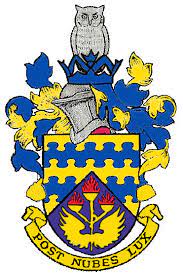
Master of Science (MSc) in Aerodynamics and Flight Mechanics
Cranfield Institute of Technology
1989-1990
As a place to advance one's aerospace knowledge, Cranfield was the ideal place to be in the late 1980s.
Computational Fluid Dynamics was in its
infancy, and there Roe and Toro were developing the foundations of a rigorous new set of algorithms for
modelling the behaviour of fluids using the advanced workstations that were just becoming available. Clarke and
Stollery were working hard on developing the theory and applications of hypersonic gas dynamics, and
luminaries such as Cooke and Eshelby were educating students in the practical applications of advanced
flight dynamic theory.
The Cranfield MSc degree consisted of several highly-specialised course modules that extended over the first half of the year, followed by an intensive research project leading to a dissertation. One of the real attractions of spending time at Cranfield was the practical flying element of the course. Many a Thursday afternoon that year was spent feeling distinctly airsick behind an instrument panel in the College's Jetstream aircraft while measuring some particular aspect of aircraft performance, and Angus McVitie was a patient but exacting instructor during the few hours of tuition we each received at the controls of a Beagle Pup light aircraft.
The rigorous mathematical approach that Toro was taking to the development of new mathematical algorithms for computational fluid dynamics attracted my attention, and I was very honoured to have him agree to supervise my MSc project.
The Cranfield MSc degree consisted of several highly-specialised course modules that extended over the first half of the year, followed by an intensive research project leading to a dissertation. One of the real attractions of spending time at Cranfield was the practical flying element of the course. Many a Thursday afternoon that year was spent feeling distinctly airsick behind an instrument panel in the College's Jetstream aircraft while measuring some particular aspect of aircraft performance, and Angus McVitie was a patient but exacting instructor during the few hours of tuition we each received at the controls of a Beagle Pup light aircraft.
The rigorous mathematical approach that Toro was taking to the development of new mathematical algorithms for computational fluid dynamics attracted my attention, and I was very honoured to have him agree to supervise my MSc project.
Dissertation : Numerical Solution of the Two-Dimensional, Compressible Navier-Stokes Equations
using Viscous-Convective Operator Splitting
By separating the solution of the parabolic and hyperbolic components of the Navier-Stokes equations into
autonomous numerical modules, we developed a very efficient approach to computational fluid dynamics
calculations which we called the Viscous-Convective Operator Splitting Technique. This approach appeared
to offer several advantages over the more conventional numerical techniques that were then current.
The main advantage of the algorithm was the possibility that it introduced into the underlying mathematical formalism of separating the time-scales associated with the convective and diffusive parts of the solution to the compressible Navier-Stokes equations, allowing each part of the solution to be advanced independently through time using its own optimised procedure. The technique was demonstrated on a number of classical problems, and, indeed, time-savings of an order of magnitude over more conventional approaches were demonstrated.
The operator splitting approach, in slightly more generalised form, is now a standard element of the CFD practitioner's armamentarium, and our major contribution was to derive the rigorous analyses of the method's stability and accuracy that allow the modern-day practitioner to make sensible and safe use of the technique.
In a somewhat counterintuitive development, some of the mathematics that we developed to analyse high-speed, compressible aerodynamic flows using the operator splitting method turned out several years later to be directly applicable to the analysis of the low-speed, incompressible flows that are generated by helicopter rotors. The Vorticity Transport Model (or VTM) that underpinned much of my later academic research was the direct offspring of my experiences at Cranfield.
The main advantage of the algorithm was the possibility that it introduced into the underlying mathematical formalism of separating the time-scales associated with the convective and diffusive parts of the solution to the compressible Navier-Stokes equations, allowing each part of the solution to be advanced independently through time using its own optimised procedure. The technique was demonstrated on a number of classical problems, and, indeed, time-savings of an order of magnitude over more conventional approaches were demonstrated.
The operator splitting approach, in slightly more generalised form, is now a standard element of the CFD practitioner's armamentarium, and our major contribution was to derive the rigorous analyses of the method's stability and accuracy that allow the modern-day practitioner to make sensible and safe use of the technique.
In a somewhat counterintuitive development, some of the mathematics that we developed to analyse high-speed, compressible aerodynamic flows using the operator splitting method turned out several years later to be directly applicable to the analysis of the low-speed, incompressible flows that are generated by helicopter rotors. The Vorticity Transport Model (or VTM) that underpinned much of my later academic research was the direct offspring of my experiences at Cranfield.
Prizes Awarded :
- 1991 Fanmakers Company Prize for Innovation in Aerodynamics

Doctor of Philosophy (PhD) in Theoretical Fluid Mechanics
University of the Witwatersrand, Johannesburg
1993-1996
By now the mathematical bug had bitten deeply, and a return to Wits University to join the
lecturing staff in 1993 allowed me the freedom to select my PhD topic at will. A major influence
was the physicist, Fabio Frescura, who during my earliest university days had astounded me, to the extent
that I could then understand, with the power of his highly geometric approach to explaining the natural
behaviour of physical systems. I'd also been impressed by several colleagues in the Applied
Mathematics Department at Wits who were applying Group Theory and Geometric Dynamics to problems in
General Relativity, and in particular to understanding the propagation of gravitational waves through the vacuum of space.
My thesis topic was borne out of the idea that such methods could be applied successfully to understanding more deeply the mysteries of aero- and fluid dynamics. In my mind the standard expositions had always been cluttered by the inadequacies of the language that was being used to describe what were essentially geometric concepts. Surely, just by using a simple exterior differential operator, all the fuss around the 'div,' 'curl,' and 'grad' operators of the conventional vector differential calculus used in most fluid dynamics texts and papers would evaporate, and Stokes's, Gauss's and Green's theorems would all become special cases of one, unified result?
This was indeed the case, and I managed during the course of my PhD to apply these advanced mathematical concepts to generalising our understanding of the dynamics of incompressible fluids that are subject to the effects of surface tension - such as droplets, films and foams.
My thesis topic was borne out of the idea that such methods could be applied successfully to understanding more deeply the mysteries of aero- and fluid dynamics. In my mind the standard expositions had always been cluttered by the inadequacies of the language that was being used to describe what were essentially geometric concepts. Surely, just by using a simple exterior differential operator, all the fuss around the 'div,' 'curl,' and 'grad' operators of the conventional vector differential calculus used in most fluid dynamics texts and papers would evaporate, and Stokes's, Gauss's and Green's theorems would all become special cases of one, unified result?
This was indeed the case, and I managed during the course of my PhD to apply these advanced mathematical concepts to generalising our understanding of the dynamics of incompressible fluids that are subject to the effects of surface tension - such as droplets, films and foams.
Dissertation : An Interaction Field Model for Immiscible Fluids
The abstract to the thesis started in traditional academic fashion:
Then came the interesting bit :
In layman's language, the fluid dynamics of these systems obeyed deep geometric laws - where the symmetries and balances inherent in their microscopic, unseen inner workings would be reflected in their behaviour in the macroscopic world that we inhabit. The same geometric approach has proved invaluable over the years in developing physical models for other systems that, although at face value would appear completely unrelated, are in fact based on the same fundamental mathematical principles.
The fact that the same mathematical language surfaces again and again in the real world, despite its garbling into the various "dialects" that are adopted by the supposedly disparate sub-disciplines of engineering, has remained an endless source of fascination to me. Indeed, even though perhaps only "glimpsed through a glass darkly", this inherent beauty at the heart of the subject has sustained my interest in, and enthusiasm for, the discipline of physical modelling over the decades since I completed my PhD research.
"An alternative to the classical surface tension model is proposed for the analysis of macroscopic fluid systems
containing domains which are subject to internal interactions. The exterior calculus is used to convert
the classical differential theory based on surface curvature to an integral theory, allowing more direct
application of calculus of variations to find constraints on the dynamics of the droplet system.
The interaction field model proposed in this work reduces, under suitable conditions, to the classical model,
but where the classical model fails, it continues to produce physically plausible predictions for the static
and dynamic behaviour of the fluid."
Then came the interesting bit :
"The interactions are represented as a volume form on a suitable product space derived from the domain occupied
by the fluid. Construction of an algebra based on an interpretation of this space as a fibre bundle allows the
domain structure of the fluid as well as the dynamics of the system to be transferred to the product space.
A group theoretic analysis shows the equilibrium configurations of the system to be related to the symmetries
of the form representing the interactions within the system, while the dynamics on the product space can be
reconstructed using a Lagrangian approach. Several classical results are derived as first-order approximations to
the interaction field approach, and a number of classical systems are shown to possess additional physical
structure when analysed using this approach."
In layman's language, the fluid dynamics of these systems obeyed deep geometric laws - where the symmetries and balances inherent in their microscopic, unseen inner workings would be reflected in their behaviour in the macroscopic world that we inhabit. The same geometric approach has proved invaluable over the years in developing physical models for other systems that, although at face value would appear completely unrelated, are in fact based on the same fundamental mathematical principles.
The fact that the same mathematical language surfaces again and again in the real world, despite its garbling into the various "dialects" that are adopted by the supposedly disparate sub-disciplines of engineering, has remained an endless source of fascination to me. Indeed, even though perhaps only "glimpsed through a glass darkly", this inherent beauty at the heart of the subject has sustained my interest in, and enthusiasm for, the discipline of physical modelling over the decades since I completed my PhD research.
© Sophrodyne Ltd 2015 - 2025


